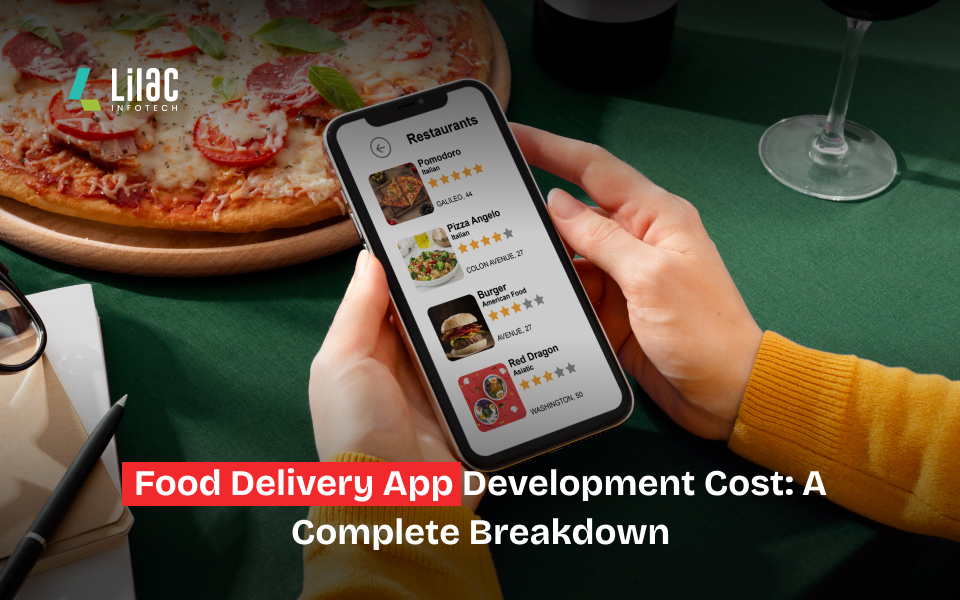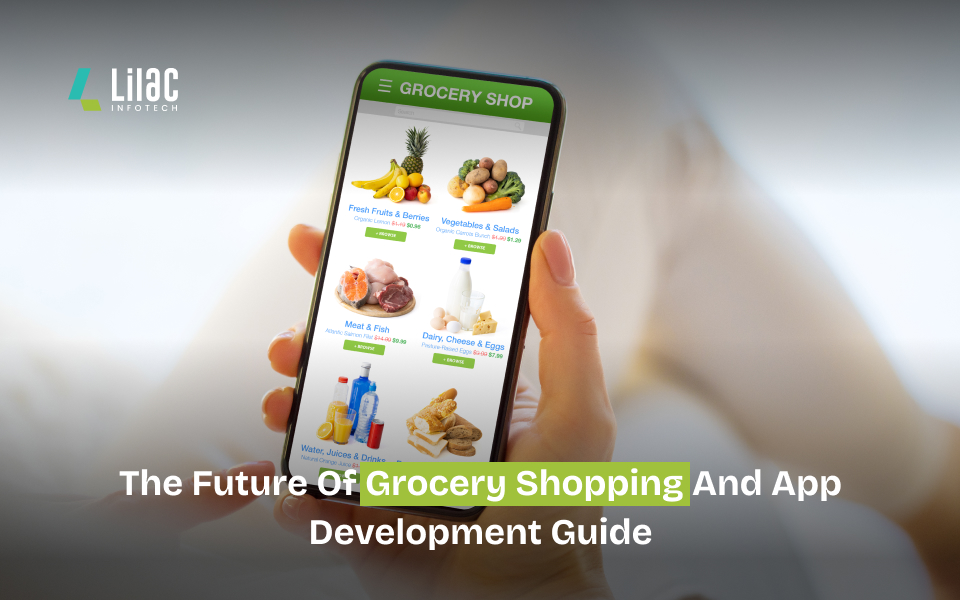
The most prevalent touch point nowadays that effortlessly links practically everyone, including companies and consumers, is the 24-7 connection provided by mobile internet service providers. E Commerce is rapidly evolving into mobile commerce or m-commerce.
As the use of mobile phones and devices, such as tablets and laptops, increased, so did the commercial value offered by developing operating system-friendly apps.
With the most pressing concern being what is the ideal method to create a comprehensive eCommerce app, this article will assist you with fundamental factors that must be kept in mind when selecting to augment an eCommerce business and website with an app.
Reason for App Development for eCommerce Businesses
Creating an eCommerce app that can be viewed and managed from virtually anywhere at any time is becoming a more valuable tool for the effective operation of any business nowadays. With most shopping taking place via mobile and internet platforms, an application may bring enormous value to the chain of events that govern company transactions.
A glance at the numbers also shows a good case for eCommerce app development, with roughly 80% of smartphone users making some sort of online transaction. As more people purchase on the internet, it is becoming increasingly important to have a mobile-friendly channel for commodity sales.
An examination of the advantages of eCommerce applications might aid in the decision-making process. The following are the benefits of eCommerce applications for businesses:
Online shopping is the latest craze.
Advantages for small and young enterprises
- Easily attracts consumers
- It gives you a competitive advantage.
- Aids in increasing sales
The millennial preference is for anything mobile.
- Improves client service
- Allows for offering customisation - makes it simple to develop a customer-centric business.
- All activities can be easily analysed analytically.
- Allows for contactless payments
- More and better marketing
- Building and spreading a brand is simpler.
- Customer loyalty is increased.
Creating an atmosphere in which customers may have a more personalized and responsive buying experience is certain to keep them. They will want to return and even promote the shopping platform or app ahead of time for rewards such as loyalty and recommender bonuses.
A crucial benefit that is sometimes ignored by business owners is the ability to achieve various business objectives through various sorts of apps. Understanding what sort of application is required may be good steps towards fulfilling the objective of releasing an app, which can assist accomplish business goals such as improved UX-UI, leading to higher user engagement and increased conversion.
While discussing the technique to be taken for an eCommerce app development, we will cover briefly the many sorts of apps that may be produced for different company aims and models in the section ahead.
ECommerce App Types
Smartphones for shopping have propelled mobile commerce (e-commerce) to a platform that is proven to be a continual propeller for enterprises. The success mantra has added a new dimension for enterprises to generate income. Customers now have access to constant connectivity thanks to mobile applications. They may now place orders at their favorite retailers at any time.
The software that will assist the activities varies depending on the numerous models that exist inside the company. The apps are distinct depending on their features and functions and were developed to fulfill certain business aims and objectives.
If you plan to start an eCommerce firm, you are likely to fall into one of four major categories:
- Business-to-Business (B2B)
- Business-to-Consumer (B2C)
- Consumer-to-Consumer (C2C)
- Consumer-to-Business (C2B)
There are, however, other types of models in use, and some businesses run on a combination of two or more models.
Choose an app type that allows for the easy exchange of commodities and assets across the channel based on the sort of transactions planned as part of the business strategy. The application will be intended to act as an important medium of communication between the two parties. Both the vendor (offering party) and the buyer (receiving party) must be able to execute their roles using the app.
1. Business-to-Consumer (B2C) eCommerce App
The apps created to support a B2C model will consume both the corporation and the end consumer of the product. The application channel is where sales take place. Such e-commerce applications include Amazon and Dominos.
Such applications provide the user immediate access to all of a company's items, whereas shops may limit supply and variety when dealing with many companies.
2. Business-to-Business (B2B) eCommerce App
This category includes applications that can facilitate commercial transactions through their interface. Goods and services can be exchanged over a mobile channel, which caters to huge transactions for significant amounts of exchange.
Examples include Alibaba, Amazon Business, and Quill, where industries sell to retailers, who then sell to consumers. As a result, the products offered here may become raw materials or things for sale in other sectors in the future.
3. eCommerce App Consumer-to-Consumer (C2C)
A C2C model operates through a mobile app when people exchange their products, offerings, or services amongst themselves, without the involvement of any business or enterprise.
Applications such as OLX and eBay, which allow customers to sell their items to other individuals just like them, support sales and purchases, enabling connectivity among a larger user base such as the community.
4. Consumer-to-Business (C2B) eCommerce App
Businesses are also interested in specialty domain offers such as content, design, and technological assets. C2B platforms such as Clutch and GitHub provide a place for subject matter experts to showcase their expertise and establish such commercial ties.
Businesses create distinct benefits from such purchases and advocate for expanding the practice of sharing valuable talent through such channels.
- Other sorts of applications
- eCommerce Ticketing Booking App
These e-commerce applications allow users to book taxis, hotels, live entertainment, gaming, travel, business or social events, and parties. The organizers use the application to communicate information about their event, and interested parties may purchase tickets or passes by paying through the application interface.
Popular examples of ticket booking applications are Goibibo and Momondo. Other similar eCommerce apps enable direct exchange of such goods between event organizers, event administrators, and end consumers.
App for eCommerce Aggregator
Aggregator eCommerce apps are mobile applications that link end users to service providers such as Walmart Inc. and Etsy Inc. They often give a platform for service providers to publish their offers, items, or products, and purchasers may buy or utilize them using the application interface.
The application owners do not supply any of the stated services, nor do they require any infrastructure setup, but rather disseminate the services of sellers that join the app for their company. Certain components are shared by all sorts of eCommerce apps. These components help the program run smoothly.
ECommerce App Development Components
The creation of an eCommerce app is a methodical procedure. What is included and in what manner is determined by the purpose or business goal to be attained? Certain components, however, are shared by all eCommerce programs. The basic components that assist design an application for full-circle functions to be executed efficiently are discussed below.
Content for Multimedia
The multimedia content consists of several sorts of material operating within an eCommerce app, such as text, photographs, videos, graphics, and even audio, that drive the user journeys on the platform. They are the primary reason a user stays glued to the app and makes transactions through it.
The content is responsible for developing client loyalty and conversions on the app and was written in an attempt to mimic interactions between two persons.
Servers for Content Storage
Servers capable of supporting various materials in huge volumes must be installed. The digital material is supplied to users and they are provided with crucial information about their characteristics. To support the app's user base, the servers must be resilient, secure, and dependable.
Processors for multimedia servers
Servers that turn raw data from diverse media sources into usable information require trustworthy and strong processors. The processor works on and saves data and information that is crucial from the user's perspective for all e-commerce apps.
Since these processors handle a large volume of data from thousands of people utilizing the program at the same time, they must be supported by symmetric multiprocessors with parallel processing capability. The app interface processes many types of data for information communication.
Video and eCommerce Servers
When creating an eCommerce application, keep in mind that various types of video data will be provided to it and received from it for various operations. When developing e-commerce software, video servers must be an essential component.
These servers are in charge of video communications, commerce, ads, video chats, and corporate multimedia. They must be able to deal with planktonic volumes pouring in from thousands of users at the same time.
Architecture of Clients and Servers
The bulk of eCommerce apps' fundamental design revolves around message transfer between the client/consumer and the server. In the sequence of events, the format is of the the request-response' kind.
A user interface is mostly a device that accepts queries that are handled at the server end. At the server end of the eCommerce program, storage, security, execution, and progress are all taking place.
ECommerce App Information Exchange
- Information communication through an eCommerce app primarily makes use of three services that work in tandem:
- Wireless services include the management of cellular, paging, and radio applications.
- Telecommunication services include both local and international telephone access.
- Cable services provide internet and associated services via coaxial, satellite lines, optical fibres, and computer services.
- This work together to govern the communication routes that operate through every eCommerce software.
Consumer End Access Devices
The execution or end device determines how an eCommerce app is used by the user or buyer. Different gadgets are used by different people depending on their comfort and the work at hand. Devices can range from a stand-alone personal computer to a television, mobile or cellphones, tablets, wearables, voice assistants, and a variety of others.
Their experience differs depending on the gadget utilized. The development must be sturdy enough to provide a consistent user experience across all devices.
Once the fundamentals are in place, the following step is to finalize the functionality that eCommerce software must have. This section explains the elements that must be built beginning with the MVP stage.
Features Required for eCommerce App Development
Mapping the most critical features while designing an eCommerce app is one of the most significant things that contribute to the app's success. Given that consumers use mobile devices for nearly everything, developers must ensure that maximum ease is integrated when a transaction occurs via an eCommerce app.
The feature set chosen will assist determine the application's ultimate structure, design, and development cost.
Depending on the aims of the eCommerce software being designed, many functionalities might be added or removed from this list. When it comes to developing an eCommerce app, custom mobile app development is always the best option.
Generic features that drive an e-commerce application's complete development strategy
- Notifications through Push
- Login is Simple
- Favorites of Customers
- Offline Usability
- App Evaluation
- Various Payment Options
- Simple Registration
- The Shopping Cart
- Delivery Tracking
- Checkout Quickly
- The bar for Advanced Search
- Product Specifications
- Product Selection
- Order Evaluation
- Memberships
- Loyalty Schemes
- Online Store Integrations
- Management of Orders and Cancellations
- Customer Service
2022 E-Commerce Trends
Chatbots
Customer connection is critical for businesses to create customer engagement. Communication creates a route for interactions, allowing customers to feel more connected to the company. Furthermore, getting questions addressed quickly will aid in conversions on the mobile app.
Chatbots increase consumer engagement by serving as a medium for answering questions, marketing activities, cross-selling, getting feedback, and more. Furthermore, consumer communication strengthens brand ties, which increases brand loyalty.
Furthermore, the data collected by chatbots provides chances for enterprises to develop analysis-driven goals.
Virtual Assistants
In today's world, the faster your services are, the better the consumer experience you can provide. Voice assistants do exactly that. Customers will be able to explore and search the website more quickly and easily, making them essential to mobile apps in 2022 and beyond.
Big Data
Big Data is beginning to change current company processes. It is a real-time study of user engagement across channels that provide the consumer with a linked and comprehensive experience. Big-position Data is expanding as corporations increase their attempts to gain customer attention.
Analysis of how a company's target audience across demographics and age engages across channels gives insights into mobile app development. Using Big Data, the app's UI/UX may be adjusted to better match the demands of end users.
Furthermore, Big Data might pave the way for a company's marketing tactics. Results may be improved using data-driven insights.
Virtual reality (VR) and augmented reality (AR)
By creating an immersive experience, augmented reality and virtual reality hope to increase user engagement. AR allows users to interact with virtual items in real-world settings. A computer-generated picture is overlaid on a real-life live image on devices using the technology.
What started with video games like Pokémon Go has evolved to improve user experiences in online retail and eCommerce. eCommerce giants such as Amazon, Ikea, and others have used augmented reality (AR) technology to allow shoppers to see how things will look in the space they intend to use.
Virtual Reality, on the other hand, employs technology to recreate a real-world experience in the virtual world. Users have the sensation of being there in the computer-generated three-dimensional world. Fashion and real estate are two businesses that have profited greatly from virtual reality.
App Integration with Wearables
Wearable device sales have been on the rise for some time. More firms are releasing dependable and feature-rich goods every day, providing buyers with a wide selection of options to choose from.
Hardware sales are fueling the demand for software integration. The necessity of integrating mobile apps with wearables is growing, stressing its importance as a crucial issue in 2022. It can provide firms with a competitive advantage in the market.
Geofencing
Geofencing is an essential personalization element that allows businesses to adjust their marketing offerings based on the location of their clients. Using the technology, they may send messages to consumers' apps whenever they are near a real store.
Businesses may leverage this power to generate traction for their products and services in a variety of ways. Items in stock, high-demand products, profitable discount programs, and other marketing methods can all be utilized to attract customers' attention.
Improved Security Measures
The global expansion of eCommerce has also resulted in the emergence of harmful actions. Payment methods have been disrupted throughout eCommerce ecosystems during the previous decade. As the threat of malicious assaults grows, so will security concerns. Data security is still a major problem. Vulnerable data invites disaster.
Furthermore, there is still a group of customers who are hesitant to purchase on smaller devices and prefer desktops to mobiles for their transactions. Enhanced security measures are likely to be prioritized in the future, rather than merely a trend for 2022.

eCommerce App Development: A Simplified Procedure
Mobile app development necessitates the participation of professionals from several fields, including a member with subject matter knowledge in the eCommerce business for which an app is being produced. Entrepreneurs and fledgling enterprises are frequently confronted with problems such as:
- What should you think about before you start?
- What kind of technology partner should I work with?
- How much responsibility may be shared?
- What are the essential qualities to create, to begin with?
All of these issues must be answered before proceeding with app development. We've included the processes below to assist you to go through the process as smoothly as possible.
Establish the App's Objectives
The efficiency with which eCommerce software can satisfy company objectives determines its success. If the app's aims are unclear, its development will constantly falter and fail to achieve the goal.
Set specified goals to plan for the integration of certain functions that must be created. The goal should be to acquire useful data via the app to improve the business with better services and goods.
Determine the Target Audience
Those who utilize the eCommerce software will ultimately determine the destiny of the firm it supplements. As a result, it is critical to map the user base and their preferences, dislikes, demographics, hobbies, and comments on the app.
Understanding the nature of the app user will aid in the development of user journeys and tales that make a lasting impression and keep the consumer returning to the app. The specialty for the app is defined as part of the process of determining the app's audience and interests. This helps to influence the eCommerce app development process.
Choose the Best Technology
Now that we know who will use the app and what functions it will do, the following step is to determine which app is required. For e-commerce, the best options are PWAs and Native applications.
PWAs, or Progressive Web Apps, are progressive webpages that run with the agility and performance of a mobile app. The main difference is that they do not need to be downloaded from play shops and instead require internet connectivity to be viewed via browsers. PWAs are a wonderful option if your budget is limited and your eCommerce business currently has a high volume of traffic.
Native Apps are standard programmes that must be downloaded from play shops and are designed particularly for operating systems such as Android and iOS. In the case of Native applications, the opportunity for UI-UX experimentation is broad, and users may enjoy premium features provided by mobile phones, such as access to photographs and cameras, an interactive interface, and the ability to use the app when offline. They increase the appeal of the eCommerce business while also allowing massive data on client behaviour and decisions to be kept as a reference for improving services and items.
Choosing which road to pursue will be determined by the final offering given to clients that visit the eCommerce site. Customization and scalability are possible with app development. A technology partner offering bespoke app development services will be able to collaborate with you to build the product of your dreams.
Determine Requirements and Features
Following the decision to design what, for whom, and how, it is now time to brainstorm on the features to be included in the eCommerce software. We did discover certain essential features that should be included in nearly every eCommerce software.
The team must provide advice and ideas to the development team on what should be included in the offering to clients or app users. A business-specific feature list must be established after careful planning.
Some Features that Add Convenience:
- Push Notifications
- Design, Branding, & Theme Options
- Feedback or Review System
- Integrating Multiple Payment Channels
- Convenience Signing in and Checking Out
- Synchronization with Back-End
- Native App UX
- Customer Wishlist & Order Memory
- Comprehensive & Customizable Catalogue System
- Social Media Linking
- Budgeting and Process Planning
Identifying or wishing to include features and functions in the eCommerce app is a lengthy process, but matching the needs to the budget is an important consideration.
Integration and development planning must take the following factors into account:
- Whether the app is customized or generic
- Whether developing a SAAS solution or a one-time offering
- Various advantages and disadvantages of each type of app addiction
All of these aspects, when reviewed, will aid in determining a budget that is appropriate for the sort of eCommerce software being produced.
To maintain a comfortable business ROI, the owners must ensure that, even when selecting an agile software development firm for app development, none of the demands go above the budget estimations at any moment.
Wondering which e-commerce model to invest in?
Talk to Our Experts
Closing Remarks
E-Commerce enterprises are evolving their customer-centricity to the point that they are becoming a part of people's daily life. Integrating intelligent elements to increase responsiveness and customer involvement has improved the online purchasing experience.
To stay up with consumer needs and expectations, the development of an eCommerce app has accelerated dramatically. Customers have defined expectations foreCommerce app Development Companies in response to the option of having an in-store experience while remaining at home.
Post a Comment
Recent Comments
I Really appreciate your Blog, because it is long with more information, and because you have shared what others are not sharing. I find your content to be the only one with clear sentences that is both informative and easy to understand.https://veirdo.in/



















Thanks for sharing this wonderful blog! I really impressed while reading your blog. Also read this blog https://www.weetechsolution.com/blog/ecommerce-mobile-app-development-trends